-
 Bitcoin
Bitcoin $83,622.6306
-1.03% -
 Ethereum
Ethereum $1,589.6945
-1.99% -
 Tether USDt
Tether USDt $1.0000
0.01% -
 XRP
XRP $2.0889
-1.88% -
 BNB
BNB $580.0353
-0.85% -
 Solana
Solana $126.7178
-2.33% -
 USDC
USDC $1.0000
-0.01% -
 TRON
TRON $0.2506
-0.43% -
 Dogecoin
Dogecoin $0.1537
-3.31% -
 Cardano
Cardano $0.6091
-4.20% -
 UNUS SED LEO
UNUS SED LEO $9.3201
-0.87% -
 Chainlink
Chainlink $12.2503
-3.06% -
 Avalanche
Avalanche $19.0105
-5.53% -
 Stellar
Stellar $0.2359
-1.88% -
 Toncoin
Toncoin $2.8505
-1.13% -
 Shiba Inu
Shiba Inu $0.0...01170
-2.63% -
 Sui
Sui $2.0950
-4.30% -
 Hedera
Hedera $0.1569
-4.99% -
 Bitcoin Cash
Bitcoin Cash $319.8208
-1.32% -
 Litecoin
Litecoin $75.7238
-2.04% -
 Polkadot
Polkadot $3.5266
-3.99% -
 Dai
Dai $1.0001
0.01% -
 Bitget Token
Bitget Token $4.2562
-1.04% -
 Hyperliquid
Hyperliquid $15.1159
-4.03% -
 Ethena USDe
Ethena USDe $0.9992
0.01% -
 Pi
Pi $0.6455
-12.89% -
 Monero
Monero $215.1633
0.19% -
 Uniswap
Uniswap $5.1866
-3.08% -
 OKB
OKB $51.9360
-0.45% -
 Pepe
Pepe $0.0...06972
-4.89%
How to optimize the parameters of the mining software?
Optimizing mining software parameters like hash rate, power consumption, and network settings is crucial for maximizing efficiency and profitability in cryptocurrency mining.
Apr 15, 2025 at 10:43 pm

Optimizing the parameters of mining software is crucial for maximizing efficiency and profitability in cryptocurrency mining. The process involves fine-tuning various settings to ensure that your mining operations run smoothly and effectively. In this article, we will explore the steps and considerations involved in optimizing the parameters of your mining software.
Understanding Mining Software Parameters
Before diving into the optimization process, it is important to understand what parameters are and why they matter. Parameters in mining software are settings that control various aspects of the mining process, such as the hash rate, power consumption, and connection to the mining pool. Optimizing these parameters can lead to better performance and higher returns on your investment.
Selecting the Right Mining Software
The first step in optimizing your mining parameters is to choose the right mining software. Different software may offer different levels of control over parameters. Popular options include CGMiner, EasyMiner, and BFGMiner. Each of these has its own set of features and capabilities, so it's important to select the one that best fits your needs.
- Download the mining software from the official website to ensure you have the latest version.
- Install the software on your mining rig, following the installation instructions provided by the software developer.
- Configure the basic settings such as your mining pool details and wallet address.
Adjusting the Hash Rate
The hash rate is a critical parameter that determines the speed at which your mining rig can solve cryptographic puzzles. To optimize the hash rate, you need to find the right balance between performance and stability.
- Monitor your current hash rate using the mining software's built-in tools.
- Experiment with different settings to find the optimal hash rate for your hardware. This may involve adjusting the clock speed and voltage of your GPU or ASIC.
- Keep an eye on the temperature of your mining rig, as higher hash rates can lead to increased heat output, which may cause instability.
Managing Power Consumption
Power consumption is another important parameter to consider when optimizing your mining software. Efficient power management can help reduce your electricity costs and increase your overall profitability.
- Use the software's power management features to set power limits for your hardware.
- Monitor your power consumption using tools like a power meter or the software's built-in power monitoring capabilities.
- Adjust the power settings to find the optimal balance between performance and energy efficiency. This may involve reducing the power limit to lower consumption while maintaining a stable hash rate.
Configuring Network Settings
The network settings of your mining software play a crucial role in maintaining a stable connection to the mining pool. Poor network performance can lead to rejected shares and reduced earnings.
- Check your internet connection to ensure it is stable and fast enough for mining.
- Configure the mining software's network settings to use the best available connection. This may involve setting up a static IP address or using a VPN for better connectivity.
- Monitor the network performance using the software's built-in tools to identify any issues that may affect your mining operations.
Fine-Tuning Other Parameters
In addition to the main parameters discussed above, there are other settings that can be fine-tuned to further optimize your mining software. These may include:
Fan speed settings to manage the cooling of your hardware.
Temperature thresholds to prevent overheating and maintain stability.
Algorithm selection to ensure you are mining the most profitable cryptocurrency for your hardware.
Experiment with different settings to find the optimal configuration for your mining rig.
Keep detailed records of your experiments to track which settings yield the best results.
Regularly update your mining software to take advantage of new features and improvements that may enhance performance.
Monitoring and Maintenance
Once you have optimized your mining software parameters, it is important to regularly monitor and maintain your mining operations. This will help you identify any issues early and make necessary adjustments to keep your mining rig running at peak performance.
- Use monitoring tools provided by the mining software to keep an eye on key metrics such as hash rate, power consumption, and network performance.
- Perform regular maintenance on your hardware, including cleaning dust from fans and ensuring proper ventilation.
- Stay informed about changes in the cryptocurrency market and mining landscape, as these can impact the optimal settings for your mining software.
Frequently Asked Questions
Q: Can I use the same mining software parameters for different types of hardware?
A: No, different types of hardware, such as GPUs and ASICs, may require different parameter settings to achieve optimal performance. It's important to experiment and find the best settings for each piece of hardware in your mining rig.
Q: How often should I adjust my mining software parameters?
A: It depends on various factors, including changes in your hardware, updates to the mining software, and fluctuations in the cryptocurrency market. Generally, it's a good idea to review and adjust your parameters at least once a month to ensure you are maintaining optimal performance.
Q: What should I do if my mining software crashes after adjusting parameters?
A: If your mining software crashes after adjusting parameters, revert to the previous stable settings and try adjusting one parameter at a time to identify the cause of the crash. Make sure to monitor your hardware's temperature and power consumption to prevent instability.
Q: Are there any risks associated with optimizing mining software parameters?
A: Yes, there are risks such as overheating, hardware damage, and reduced stability if parameters are set too aggressively. Always monitor your mining rig closely and make gradual adjustments to minimize these risks.
Disclaimer:info@kdj.com
The information provided is not trading advice. kdj.com does not assume any responsibility for any investments made based on the information provided in this article. Cryptocurrencies are highly volatile and it is highly recommended that you invest with caution after thorough research!
If you believe that the content used on this website infringes your copyright, please contact us immediately (info@kdj.com) and we will delete it promptly.
- Public Companies Added Nearly 100,000 Bitcoin To Their Balance Sheets During Q1 2025
- 2025-04-16 07:15:16
- Amidst the Stormy Seas of the Crypto World, a New Titan Emerges—BlockDAG
- 2025-04-16 07:15:16
- Bitcoin (BTC) reclaims $85,000, setting the stage for altcoins to rally
- 2025-04-16 07:15:14
- The Pi Network token price has increased by more than 14% over the past week.
- 2025-04-16 07:15:14
- A wave of capital is flowing out of Ethereum [ETH] and into Tron [TRX]
- 2025-04-16 07:05:14
- Figment to power 3iQ's newly approved Solana exchange-traded fund (ETF)
- 2025-04-16 07:05:14
Related knowledge
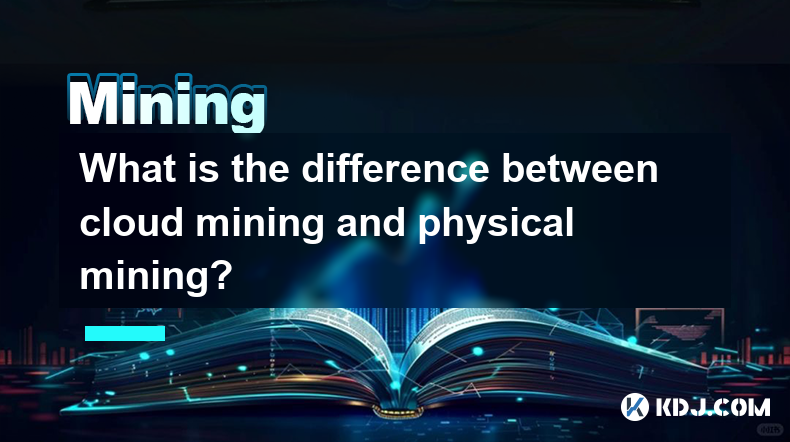
What is the difference between cloud mining and physical mining?
Apr 16,2025 at 01:49am
What is the difference between cloud mining and physical mining? In the world of cryptocurrencies, mining is the process by which new coins are generated and transactions are verified and added to the blockchain. There are two primary methods of mining: cloud mining and physical mining. Understanding the differences between these two approaches can help...
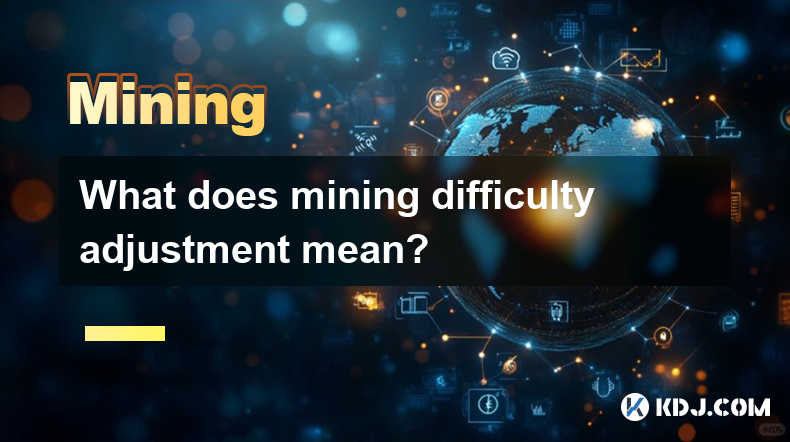
What does mining difficulty adjustment mean?
Apr 16,2025 at 12:42am
What does mining difficulty adjustment mean? Mining difficulty adjustment is a crucial mechanism in blockchain networks, particularly in Proof of Work (PoW) systems like Bitcoin. It ensures that the rate at which new blocks are added to the blockchain remains consistent, despite fluctuations in the total computational power (hash rate) of the network. T...
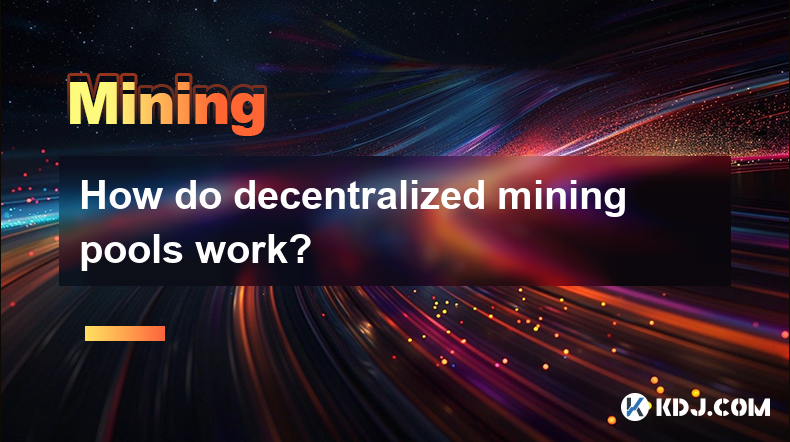
How do decentralized mining pools work?
Apr 16,2025 at 05:42am
Decentralized mining pools represent a significant evolution in the world of cryptocurrency mining, offering a more democratic and transparent approach compared to traditional centralized pools. In this article, we will explore the mechanics of decentralized mining pools, their benefits, and how they operate within the cryptocurrency ecosystem. What are...
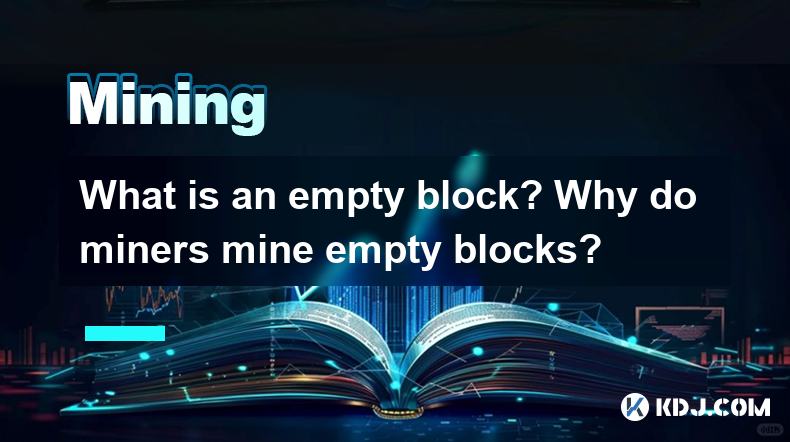
What is an empty block? Why do miners mine empty blocks?
Apr 16,2025 at 01:28am
What is an Empty Block?An empty block in the context of blockchain technology, particularly in cryptocurrencies like Bitcoin, refers to a block that contains no transactions other than the coinbase transaction. The coinbase transaction is a special transaction in which new bitcoins are generated and awarded to the miner who successfully mines the block....

What is the KawPow algorithm?
Apr 16,2025 at 06:43am
The KawPow algorithm is a proof-of-work (PoW) consensus mechanism specifically designed for the Ravencoin blockchain. It evolved from the earlier X16R and X16RV2 algorithms, aiming to enhance the security and efficiency of the mining process. KawPow was introduced to address the issues associated with ASIC (Application-Specific Integrated Circuit) miner...
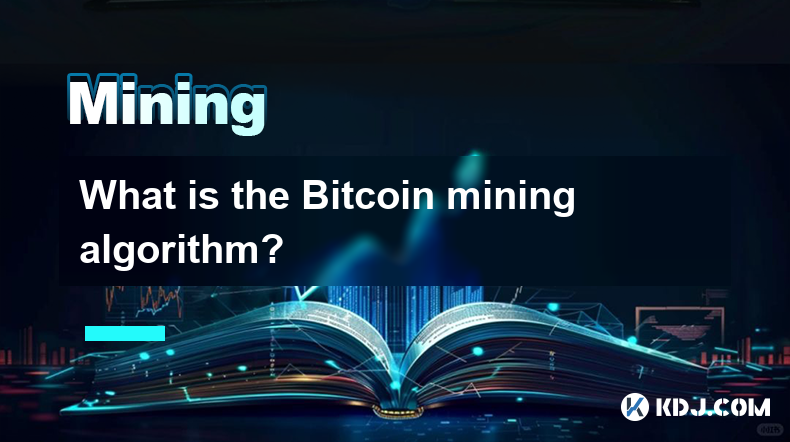
What is the Bitcoin mining algorithm?
Apr 15,2025 at 08:00pm
What is the Bitcoin Mining Algorithm? Bitcoin mining is a crucial process that maintains the integrity and security of the Bitcoin network. At the heart of this process lies the Bitcoin mining algorithm, which is responsible for verifying transactions and adding them to the blockchain. Understanding this algorithm is essential for anyone interested in t...

What is the difference between cloud mining and physical mining?
Apr 16,2025 at 01:49am
What is the difference between cloud mining and physical mining? In the world of cryptocurrencies, mining is the process by which new coins are generated and transactions are verified and added to the blockchain. There are two primary methods of mining: cloud mining and physical mining. Understanding the differences between these two approaches can help...

What does mining difficulty adjustment mean?
Apr 16,2025 at 12:42am
What does mining difficulty adjustment mean? Mining difficulty adjustment is a crucial mechanism in blockchain networks, particularly in Proof of Work (PoW) systems like Bitcoin. It ensures that the rate at which new blocks are added to the blockchain remains consistent, despite fluctuations in the total computational power (hash rate) of the network. T...

How do decentralized mining pools work?
Apr 16,2025 at 05:42am
Decentralized mining pools represent a significant evolution in the world of cryptocurrency mining, offering a more democratic and transparent approach compared to traditional centralized pools. In this article, we will explore the mechanics of decentralized mining pools, their benefits, and how they operate within the cryptocurrency ecosystem. What are...

What is an empty block? Why do miners mine empty blocks?
Apr 16,2025 at 01:28am
What is an Empty Block?An empty block in the context of blockchain technology, particularly in cryptocurrencies like Bitcoin, refers to a block that contains no transactions other than the coinbase transaction. The coinbase transaction is a special transaction in which new bitcoins are generated and awarded to the miner who successfully mines the block....

What is the KawPow algorithm?
Apr 16,2025 at 06:43am
The KawPow algorithm is a proof-of-work (PoW) consensus mechanism specifically designed for the Ravencoin blockchain. It evolved from the earlier X16R and X16RV2 algorithms, aiming to enhance the security and efficiency of the mining process. KawPow was introduced to address the issues associated with ASIC (Application-Specific Integrated Circuit) miner...

What is the Bitcoin mining algorithm?
Apr 15,2025 at 08:00pm
What is the Bitcoin Mining Algorithm? Bitcoin mining is a crucial process that maintains the integrity and security of the Bitcoin network. At the heart of this process lies the Bitcoin mining algorithm, which is responsible for verifying transactions and adding them to the blockchain. Understanding this algorithm is essential for anyone interested in t...
See all articles























































































